THE RETURN OF THE LIVING DEAD (1985)
When two bumbling employees at a medical supply warehouse accidentally release a deadly gas into the air, the vapours cause the dead to rise again...
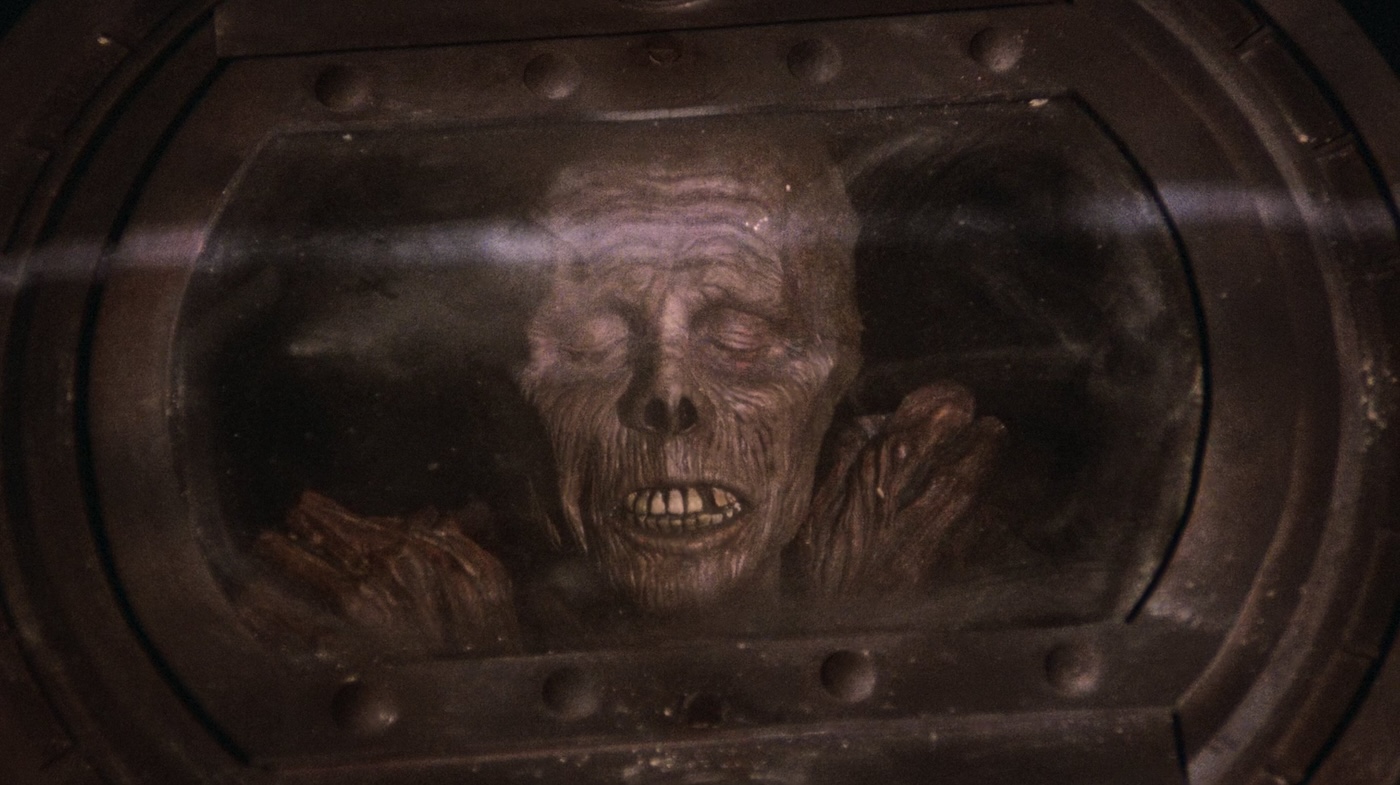
When two bumbling employees at a medical supply warehouse accidentally release a deadly gas into the air, the vapours cause the dead to rise again...


If you’re reading this as a fan, you likely agree Dan O’Bannon is a name deserving more recognition. He’s up there with Steven Spielberg making people afraid of the water, but this man did that for graveyards and space. Co-writing Alien (1979), O’Bannon’s been overshadowed by director Ridley Scott. Spawning two iconic horror franchises should have proven his worth, so O’Bannon distinguished his unique talent for creating overwhelming, unstoppable, and vastly entertaining big-screen menaces.
John Russo, co-writer of Night of the Living Dead (1968), split from George A. Romero’s troupe to form his own production company, New American Films. As the story goes, in their parting, he retained only a portion of the original title: he kept ‘The Living Dead’ while Romero retained ‘of the Dead.’ Take this as you will given The Walter Reade Organization changed the original title of Night of the Flesh Eaters, thus making the mistake of releasing it into the public domain. With the onslaught of cheap cash-ins using the full title, these two friends simply agreed on an amicable split.
In 1978, Romero released his sequel Dawn of the Dead and Russo published his own sequel novel Return of the Living Dead. With producer Tom Fox, it would be another seven years before they adapted the latter for the screen. The same year, Romero released his next Dead entry, Day of the Dead (1985). Luckily, Dan O’Bannon, as director, overhauled the entire Living Dead novel—forging his own wildly imaginative take as dramatic as Romero’s flesh-eaters from the voodoo origins.
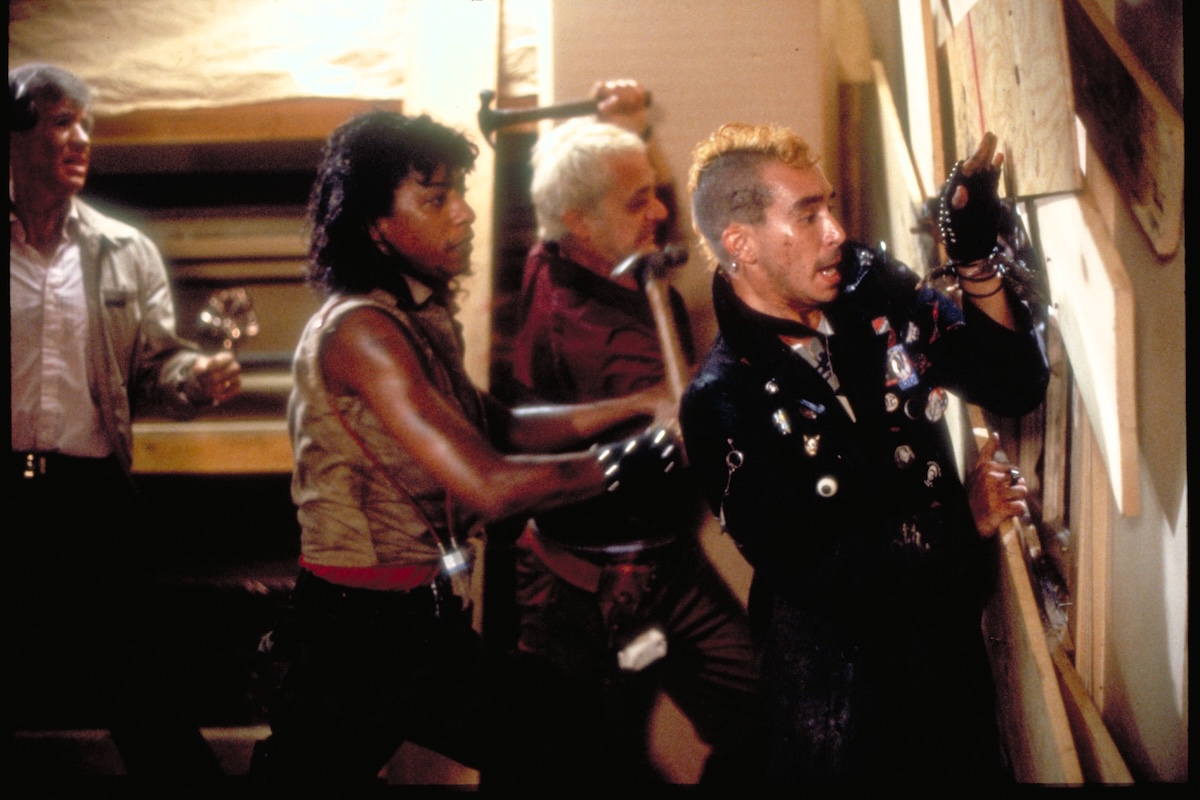
Overhauling seems the most respectful approach, as any ‘direct’ sequel would be distasteful. After all, did you know that movie was based on a true case? Yes, O’Bannon injects a real sense of fun with the opening disclaimer, “The events portrayed in this film are all true. The names are real names of real people and real organizations.” They fudged the details but the truth is all the screw-ups: the military shipped the bodies to the wrong place, Frank (James Karen) the storage worker never called them, and then he kicks a rickety old barrel for rookie Freddy (Thom Matthews) and releases the highly contagious gas.
There’s a charm, alongside the initial director Tobe Hooper’s The Texas Chain Saw Massacre (1974), to boldly lie about “true events.” In a post-Blair Witch Project (1999) world, every other Return article has the same copy-paste trivia about the barrel glass legitimately cracking from heat or Linnea Quigley shaving her pubes. We know it’s a film. But we live in an age of misinformation, not all that different from suspending your disbelief that these small-town horrors are happening just down the road.
These rumours are best spread between colleagues bored at work; passing the time between quiet induction talks where even a real frozen cadaver is downplayed as simple medical inventory. The opening sequence lulls the audience into an exceedingly ordinary slice of life that leaves room to imagine things like why all the medical skeletons have perfect teeth. This peace is shattered first by the punk-rock ensemble which takes the crazed biker gang of Dawn and makes them the protagonists. An eccentric contrast of pastel preppy kids and hardcore punks. They take their die-hard attitude to the extreme with outbursts like “I like sex and death!” followed by “so fuck off and die!” An integral ingredient in Return’s iconography, their nihilistic expressions serve as yet another joke for their imminent mortality.
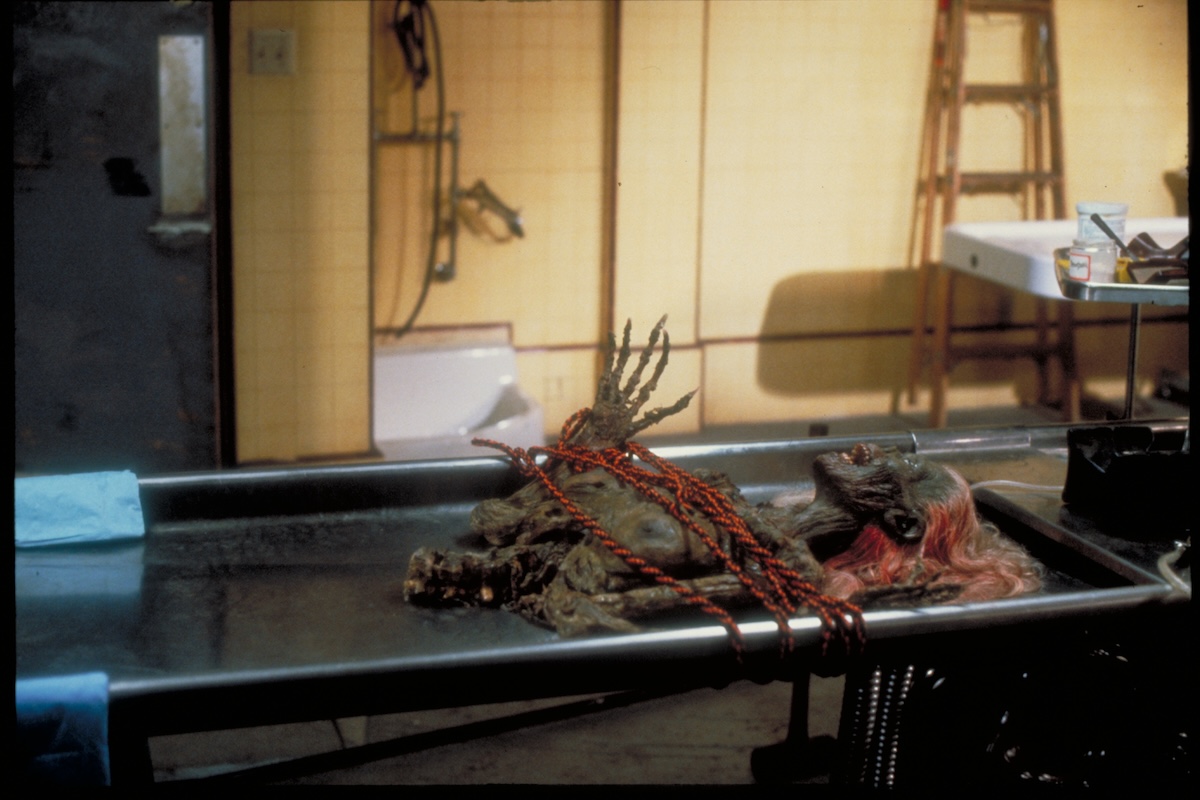
The first big zombie-related laugh nails the tone going forward as an anatomical split dog is panting and whining while nailed to a board. A freaked-out Frank beating it with a crutch to no effect is funny, brutal, and tragic. Karen steals the show in almost being too much—his constant wailing scores every feeble attempt at de-escalation, tuned perfectly to the escalating frustration at nothing working. Most horrors pat themselves on the back for mentioning another film title. These characters curse out Romero for embellishing the little things like aiming for the head. The screwball bickering of “I hit the fucking brain!” and “you mean the movie lied!?” hurls audiences off any comfortable expectations set up minutes prior.
The slapstick of sawing the head clean off, only for the cadaver’s body to wriggle free and trash the entire warehouse is funny enough. O’Bannon carries through his Alien influences of worker pressures with an insulted Frank bellowing “watch your tongue if you like this job!” This Abbott & Costello double act could support an entire story, with fantastic comedic moments like calmly phoning their boss over their “little problem.”
Rehearsing for a week to perfect the Howard Hawks-inspired dialogue, the six-week shooting schedule made their frantic mania all too genuine. Quotes from most of the cast paint “every minute, it was in danger of being too ridiculous” as Clu Gulager put it. Beverly Randolph went as far as “his directing style was a little rough, it was frightening for me.” Jewel Shepard recalls their moment of relief when O’Bannon ran past screaming “he’s gonna kill me, he’s gonna kill me!” as Gulager chased him with a baseball bat. The first-time director did attempt some empathy, supposedly eating raw cow brains to tempt the zombie actors into following suit on camera.
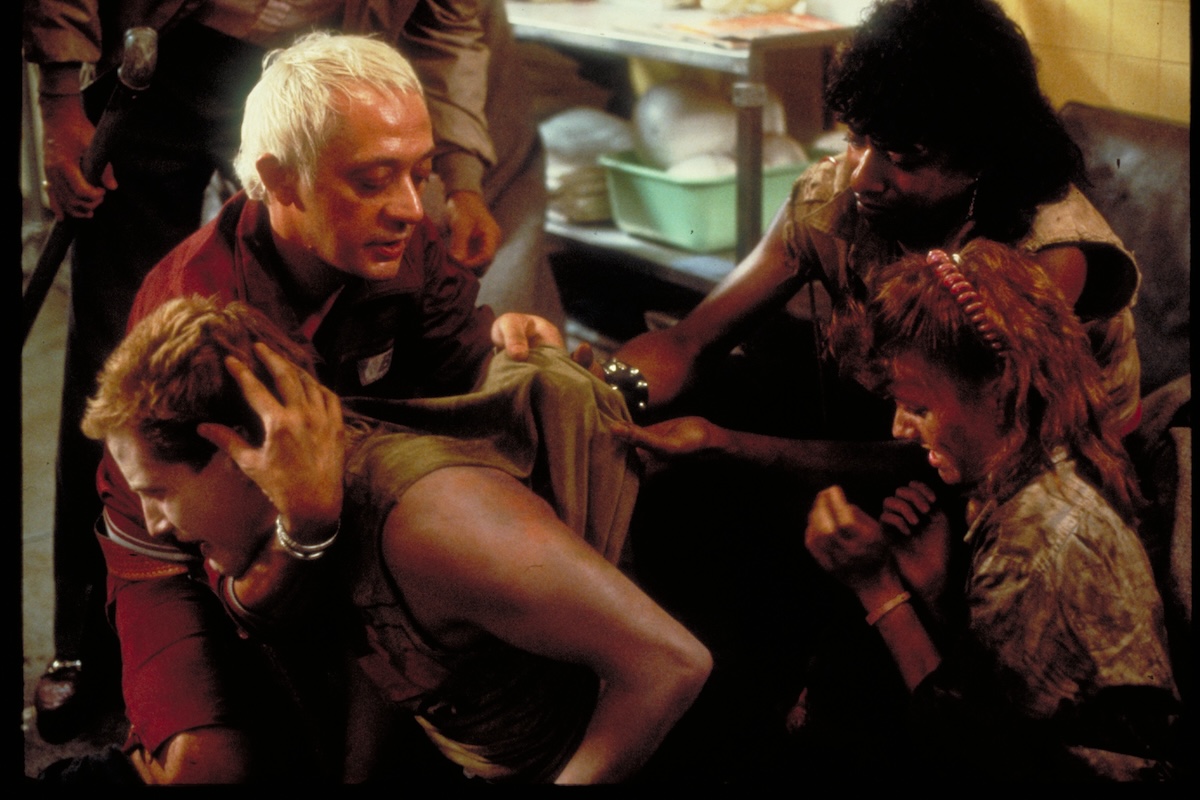
The characters have as much luck handling their own pressures, tackling and dismantling the cadaver for cremation across the road to avoid potentially getting sued by the government. One creative homerun after the next, so many zombie films fall on the classic getting-bitten trope, but burning the bodies here only shoots up toxic smoke, sending down toxic rain, all over the nearby graveyard. Return is Murphy’s Law in action: anything that can go wrong, will go wrong.
Raining on the punk parade, it may be hypocritical of me to call it played out and still discuss it, but Linnea Quigley has never been more nude than now in 4K. The story goes producer Graham Henderson objected to her pubic hair on screen and was none too pleased after she shaved, revealing everything. Patched over like a Barbie doll, the impeccably named Trash is a real treasure. Bizarre humour soars above the comical touches of Dawn, with Ernie the mortician (Don Calfa) listening to ‘Panzer Rollen in Afrika Vor’ while a painting of Hitler playing cards adorns the back wall of his office. The Nazi in hiding is deeply offended at the supposed animal cruelty of his friends asking to burn “rabid weasels” in trash bags.
For a celebrated zombie-fest, it knows how to build anticipation as this minor leak has caused such contained problems that forty minutes in the leads are celebrating “we’re home free!” Knowing how unstoppable a single reanimated corpse is, an entire graveyard of ghouls and skeletons are rising up to “Partytime” by 45 Grave. This is where the party truly starts. Zack Snyder’s Dawn of the Dead (2004) remake always seems a benchmark, but audiences had undead whiplash the very same year with these zombie hordes. Running, screaming, even talking, it’s difficult to immediately tell if they are the walking dead and then it’s too late. The wide shots of first responders being swarmed are genuinely shocking. It’s hilarious when the police soon fall for the same trick. In that perfect cocktail of horror and comedy, maybe the greatest joke of the film when a zombie calls in on the radio, “send… more… paramedics.”
“Dawn of the Dead came up so often it almost got to be kind of boring. Originally, my assistant Bob Bliss and I had done a lot of paint tests on about a half-dozen heads. Immediately those heavy in purple, blue, and colorations suggesting severe bruises were vetoed by O’Bannon because he thought they looked like the stuff used in Romero’s films.”—William Munns, original makeup supervisor of The Return of the Living Dead
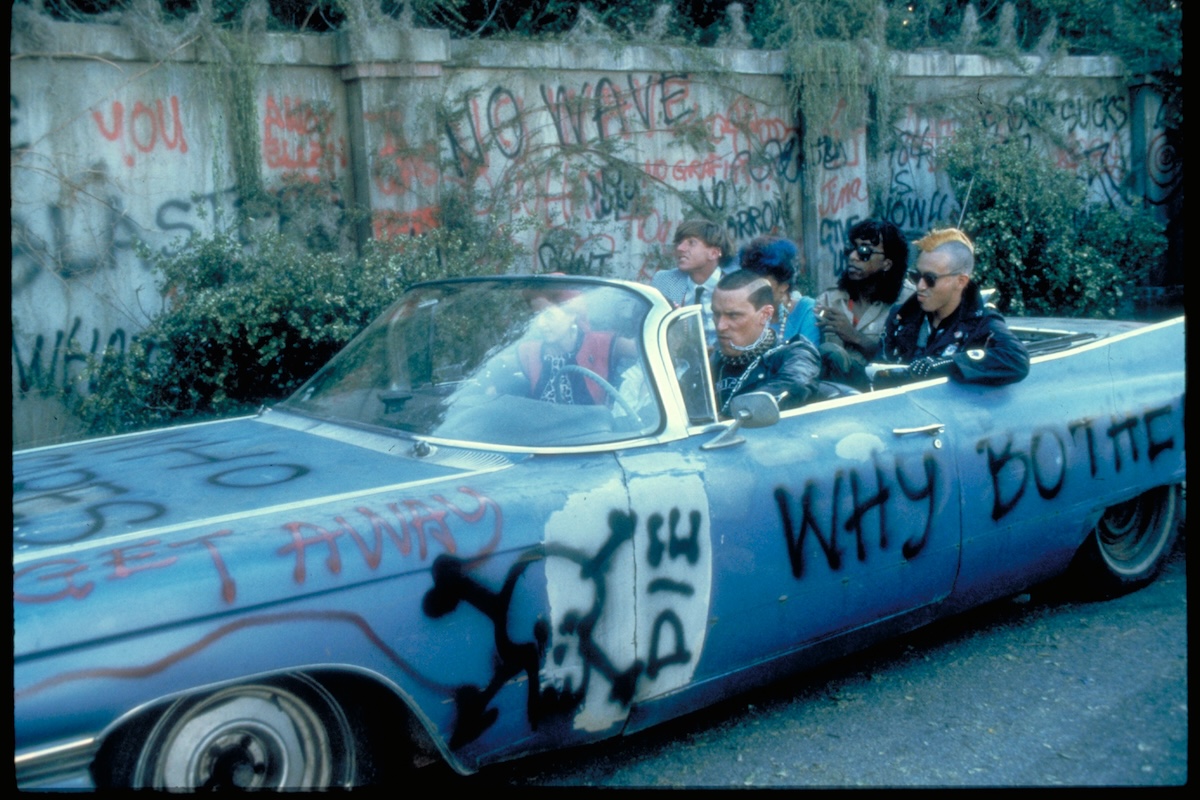
There are incredible “principal corpses” in Return of the Living Dead, but anyone who’s enjoyed this film more than once has noticed that a good number of the horde barely have any make-up. Some are just people with muddy faces. Up to forty extras were zombies, and most wore prefabricated masks to cut down on time and money. Production designer William Stout does a decent job of weathering the long-buried costumes, with inspiration from the Civil War, World War I and II, the Guanajuato mummies of Mexico, and even nods to the EC Comics horror publications like Tales From The Crypt. O’Bannon grew frustrated with his team struggling to meet his scope and fired Munns four weeks into their six-week production.
Replacement Kenny Myers was coached quickly by Munns before having to finish one of the most popular zombies in cinema, the legendary Tarman. A rotten marionette performance, achieved between actor Allan Trautman and actual puppeteers with “all kinds of mechanics in it,” is disturbingly uncanny. Festering in that barrel, his walk appears boneless, and yet his wide-eyed excitement towards more “brains!!” takes you aback. Stout praises Myers, saying, “under tremendous pressure and with no money, he went far beyond what he was required to do.”
Other FX legends like Rick Baker and then young protégé Tony Gardner excel in bringing to life the desiccated half-corpse with baby-blues. The animatronic work succeeds in developing such tragedy for the living dead’s plight—you almost feel sorry for them in their eternal hunger as she laments, “I can feel myself rotting!” This situation sucks for everyone involved, even the dead, meaning there’s never going to be an end to it all. Horror is captured in pitch-black form, with Frank and Freddy learning in their sickened states that they have no pulse, blood pressure, or body heat. They’re already the living dead. People are splitting up, rooms are overrun, and Frank, with his remaining humanity, crawls into the cremator, one of the bleakest fates in the last four decades of zombie fiction. A death spurred by comfort, as James Karen simply didn’t want to join the horde out in the rain and came up with the entire scene himself, down to removing his wedding band and praying for forgiveness.
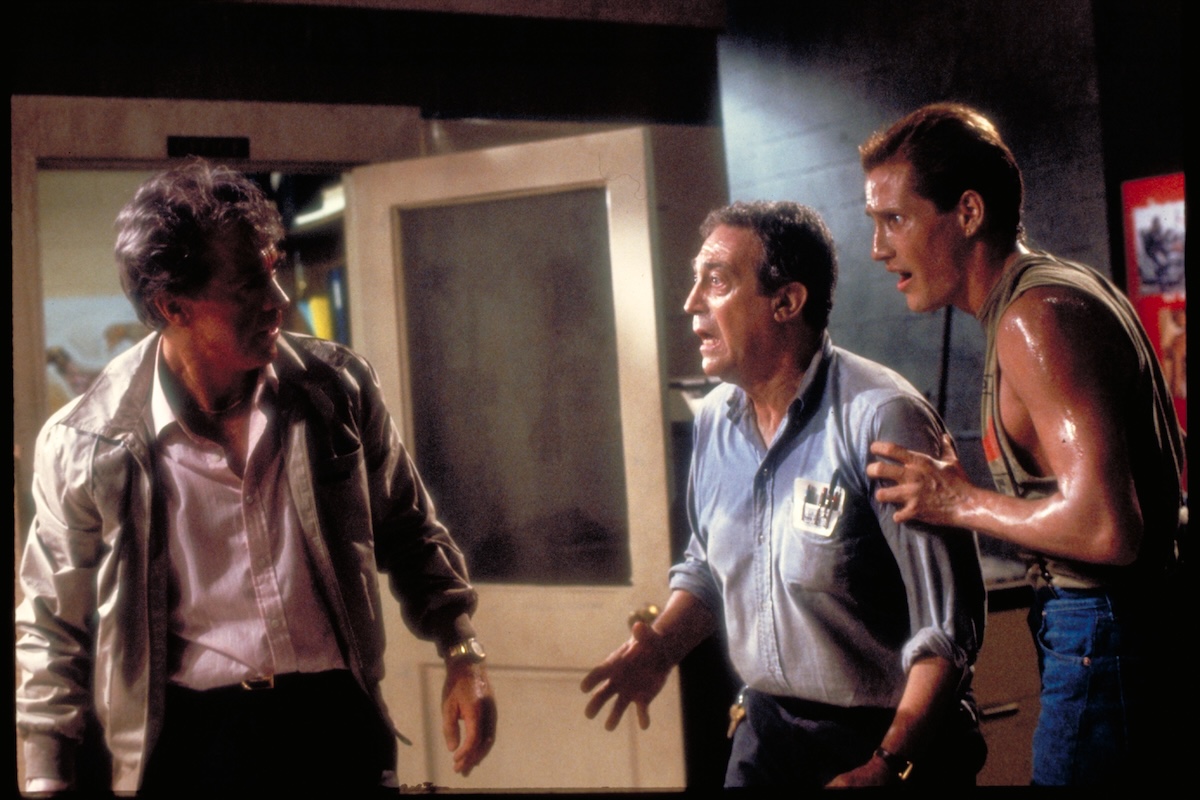
One death hardly compares to the grand finale which, in the simplest brutality, is one great punchline to all their problems. More death, more smoke, more death, and one last reprieve of “do you wanna party!?” A summer celebration it was, grossing $14M on a $4M budget; the success lived on through home video and cable, making it a cult favourite. Day of the Dead would earn more, given the success of Dawn, but critics were far harsher to Romero’s oppressive cynicism. Both lean on overwhelming bleak satire, and feature smarter zombies, but Day lacks The Cramps.
Both would also endure and, like a zombie plague, spawn exponentially uglier creatures. Producer Tom Fox capitalised with Return of the Living Dead Part II (1988) without Dan O’Brannon. Ken Wiederhorn brings a perfectly serviceable sequel, committing the cardinal sin of actually killing the living dead for a happy ending. Brian Yuzna recovered with the underrated Return of the Living Dead 3 (1993), mining all new despair out of two Romeo and Juliet-style doomed lovers. Then there’s RotLD: Necropolis (2005) and RotLD: Rave to the Grave (2005), filmed in Romania for the Sci-Fi Channel. Need I say more? Actually, the dead are yet to rest…
After years of legal troubles between Fox’s estate and the Syfy producers, Living Dead Media formed with the rights to launch a Kickstarter crowdfunding campaign for a new film in 2023. Beverly Randolph then collaborated with microbudget production studio DRagonflix to make their own sequel titled Trash’s Revenge, starring not only half of the still-living cast but CGI James Karen and Don Calfa, who have legitimately passed away. Yet another legal battle ensued and neither has fully emerged. To think that this film came from the parting of friends, and audiences were rewarded with two fantastic franchises. Every update on these new entries seems on a par with the cheap cash-ins of Romero’s original classic.
With Arrow Video releasing this 40th anniversary edition, the only other film Dan O’Bannon directed, The Resurrected (1991), is receiving similar 4K treatment by Vinegar Syndrome this very same month. His name is getting the respect it deserves, and this double bill sounds like the perfect excuse to party.
USA | 1985 | 91 MINUTES | 1.85:1 | COLOUR | ENGLISH

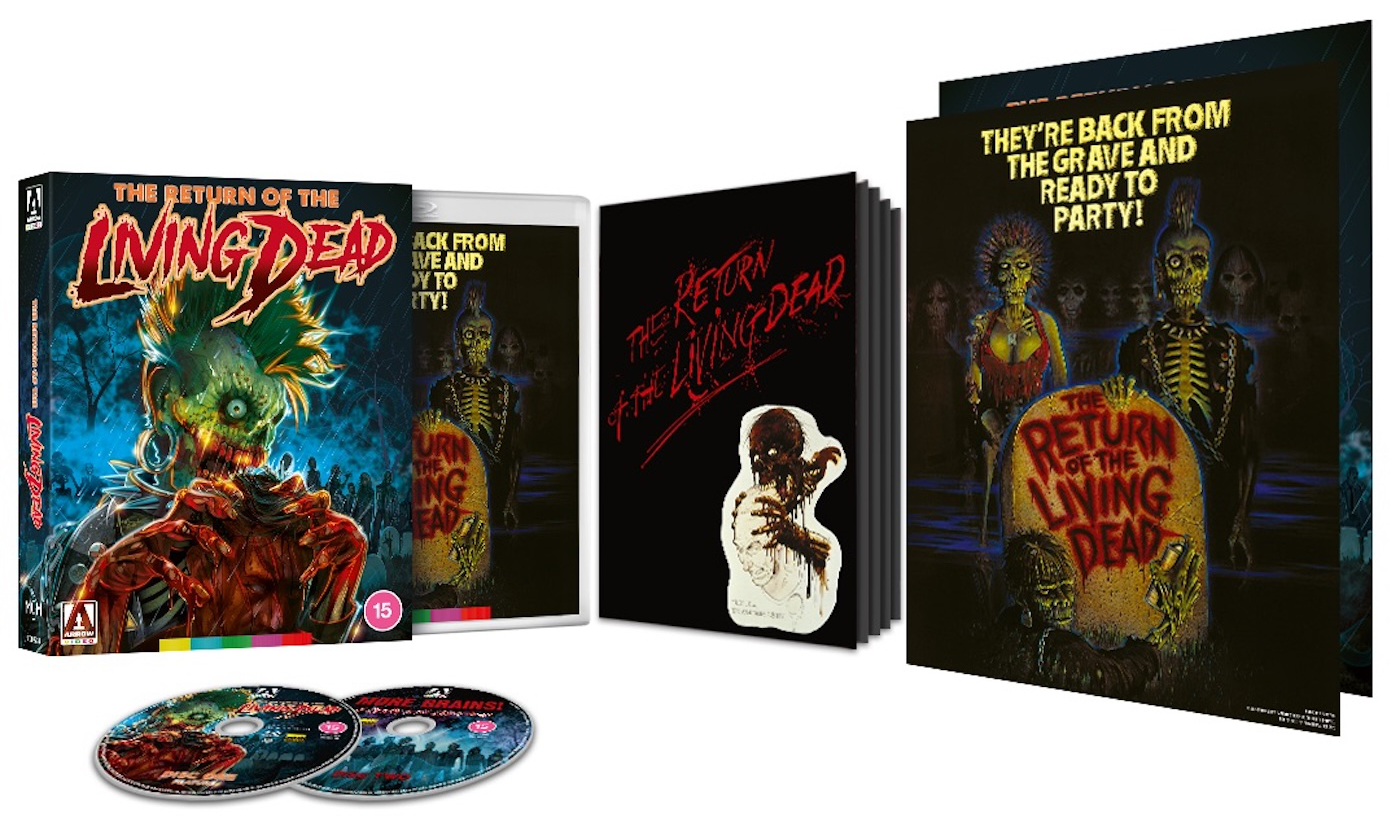
While only viewing the High Definition (1080p) Blu-ray presentation (this release is also available on 4K Ultra HD Blu-ray), the numerous Arrow Video Blu-rays in my possession have never disappointed, so I feel confident their 4K restoration from the original negative is the best this film’s ever looked. Complimenting Jule Brenner’s 1980s neon cinematography, the mad antics between a warehouse, crematorium, and graveyard have never been more vibrant. No detail is missed in the upmost clarity of these restorations, every slash of rain is crystal clear and the special effects flourish to full effect as you’ll stare in disbelief that there’s a living human inside the glistening, crumpling Tarman.
Those with tricked-out sound systems will jump in their seat at every needle drop thanks to the lossless mono audio plus DTS-HD MA 5.1 surround audio. As past home releases have come and gone, the soundtrack has been altered due to expiring rights issues, since 2016 the only missing song is “Dead Beat Dance” by The Damned and given nearly a decade, seems impossible to restore. A whopping four commentaries gives you plenty to listen to and four excuses to appreciate the visuals.

director: Dan O’Bannon.
writer: Dan O’Bannon (story by John Russo, Rudy Ricci & Russell Streiner).
starring: Clu Gulager, James Karen, Thom Matthews, Don Calfa, Linnea Quigley, Beverly Randolph, Miguel A. Núñez Jr., John Philbin, Jewel Shepard, Brian Peck & Mark Venturini.
